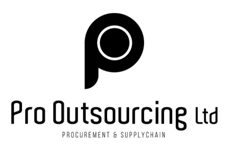Purchasing Strategies: A Comprehensive Guide for Businesses
Purchasing strategies are crucial plans that businesses implement to optimise their procurement processes. The choice of strategy is influenced by several factors, including the nature of the product or service being procured, market conditions, and the specific needs and goals of the business. This article will delve into the common types of purchasing strategies and their applications.
Spot Buying:
This strategy involves purchasing goods or services as they are needed, often at the current market price. This is typically used for one-off purchases or when the need for a product or service is unpredictable.
Systematic or Scheduled Buying:
This strategy involves setting up regular, scheduled purchases with a supplier. This is often used for goods or services that are needed on a regular basis, and it can help ensure a steady supply and potentially negotiate better prices due to the regularity and predictability of the orders.
Contract Buying:
This strategy involves entering into a long-term contract with a supplier. This can provide price and supply stability and is often used for critical goods or services where a steady supply is important.
Just in Time (JIT) Buying:
This strategy involves coordinating purchases so that goods or services are delivered just as they are needed. This can reduce inventory costs and is often used in manufacturing.
Volume Buying or Bulk Buying:
This strategy involves purchasing large quantities of a product to take advantage of volume discounts. This is often used when storage costs are low and the product has a long shelf life.
Consignment Buying:
In this strategy, the supplier stocks the goods at the buyer’s location, but the buyer only pays for the goods as they are used. This can reduce inventory costs and is often used for expensive items that are infrequently used.
Performance Buying:
This strategy involves purchasing goods or services based on the supplier’s performance. The supplier is typically incentivized to improve their performance over time. This is often used for service contracts or when quality is more important than price.
Green or Sustainable Buying:
This strategy involves choosing suppliers who use environmentally friendly practices. This can be used by businesses that prioritize sustainability.
Remember, the best strategy will depend on your specific circumstances and objectives. It’s often beneficial to use a mix of strategies based on the different types of purchases your business makes.
Ready to Elevate Your Procurement Processes?
Navigating the world of procurement can be complex, but you don’t have to do it alone. Our team of procurement specialists is ready to guide you through every step of the process, from supplier selection to negotiation and contract management.
Whether you’re looking to optimise your procurement strategies, reduce costs, or build stronger supplier relationships, we’re here to help.
Take the first step towards a more efficient and effective procurement process today. Contact us to learn more about our services and how we can tailor them to meet your specific needs.
Don’t wait – your procurement success starts here. Get in touch with us today! LINK

